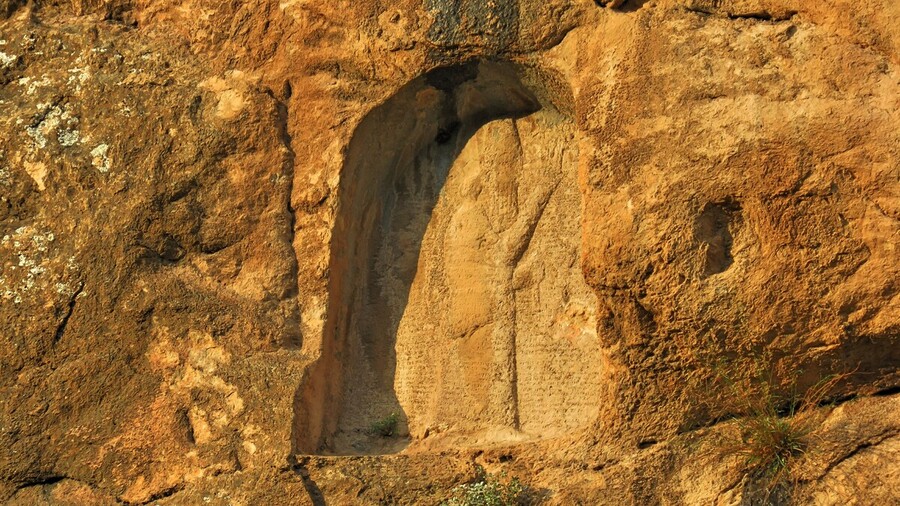As one of the most valuable and reliable sources of information, inscriptions have great potential to be studied from different perspectives, so that historians, archaeologists, linguists, and sociologists can each answer their questions about these cultural elements. Therefore, inscriptions are one of the strongest sources of the history of life of any nation.
One of the most valuable inscriptions in Kurdistan is the "Tangiwar Inscription" and the "Hawraman Cuneiform Slate", which is located between the villages of Tangiwar and Weziar in the city of Kameran in the East part of Kurdistan. This historical inscription is located on the top of Mount Zanyana in Tangiwar village (45 kilometers from Kameran city). The Tangiwar inscription is described as part of the Assyrian heritage and lifestyle and a monument of their rule in the East part of Kurdistan, which dates back to around the first millennium BC, the Iron Age.

According to the results of archaeological activities in this place and Mount Zanyana in general, there seems to have been a castle that was protected against any military attack for a long time due to its location on the banks of a rushing river. Opposite the inscription and across the valley, there is a space called “Zanyana” by the locals, which seems to have been a small prison of the castle. Near the northwest gate of the castle is a stone battlefield used for the entrance to the castle.
The first article in English on the Hawraman inscription was published by Grant Frame, Professor of Assyrian Studies, in the journal Sharq, entitled "Saragon II Inscription, Tangiwar Inscription," which is the most comprehensive study on this inscription.

According to Professor Frame, the inscription is written in the ancient Assyrian language, and cuneiform writing measures 120 x 120 cm, and contains 50 lines. The text of the inscription, after praising the Assyrian gods such as Mardokh, Nabu, Sin, Shamsh, and Ishtar, mentions the victories of the Assyrians. It has also mentioned the cities, villages, and areas that have been destroyed in the war. The contents of the inscription are arranged in five sections: after praising and praying to the Creator of the universe, it points out the names and titles of Sargon and praises him concerning the services of the king. Then the great victories of Sargon and his attack, as well as the names of the surrounding cities, villages, and regions are mentioned, and it ends with the curse of the one who destroys the inscription.
In addition to the inscription, a statue can be seen at the site. Some believe that the statue belongs to Sargon II because the invasion of Sargon and the Assyrians to this area occurred in 708 or 707 BC, which is the reason for the formation of the statue and inscription of Tangiwar.

Therefore, the carved statue of Tangiwar is most likely the personification of the Assyrian king with a thick beard and could be one of the typical symbols of the Assyrian rulers. The statue is 120 cm high, 170 cm wide and 35 cm deep. Inside the arch is a human skeleton 150 cm long and 35 cm wide. The human character appears in the profile dressed in royal clothes, wearing a hat and holding a whip. His right leg is placed in front and his left leg in the back, his right hand is raised upwards and his left hand is placed on his stomach.
According to historical comparisons, this inscription and the sculpture have many things in common with two other inscriptions from the time of Sargon II in Cyprus and Najafawa, Kermashan. This historical work was registered as a national cultural heritage by the Iranian government in 2001.








